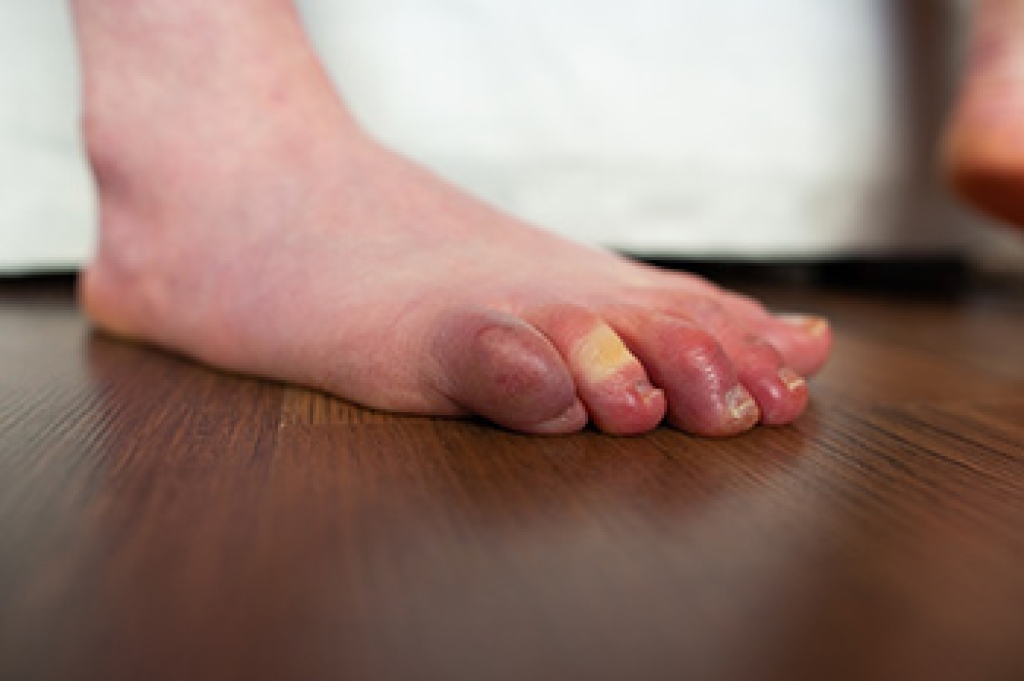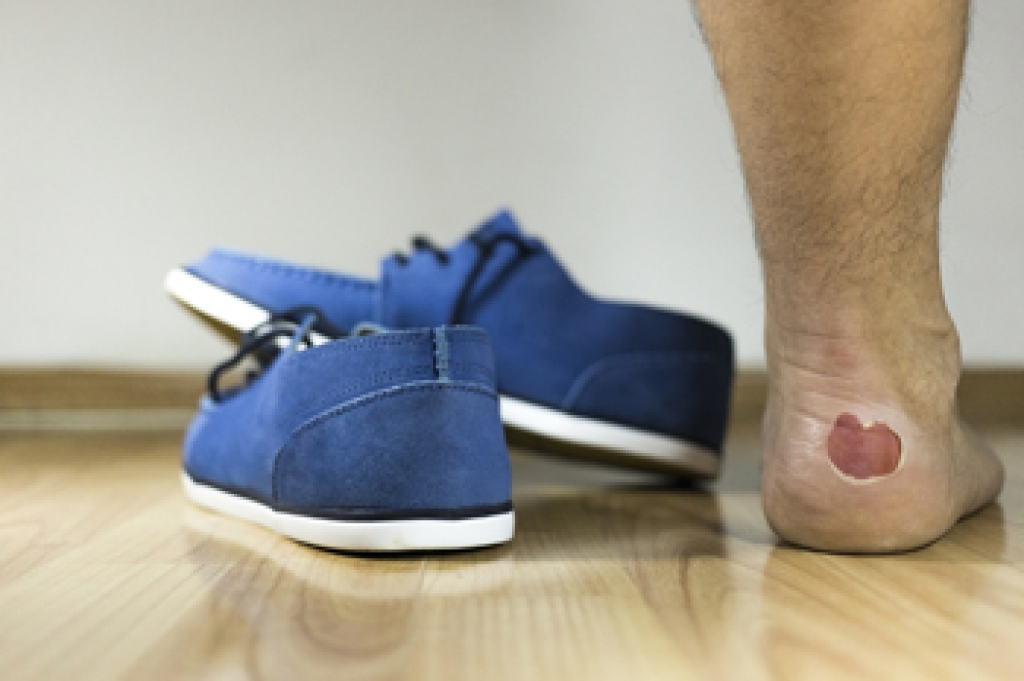Blog
Symptoms of Erythromelalgia

Various conditions can affect the feet, and erythromelalgia is considered to be a rare foot condition. Common symptoms that are often experienced with this ailment can include burning pain, increased skin temperature, and the affected area may be red. The reason this condition can occur is unknown, despite researchers discovering it may happen from abnormalities in the blood flow. Many patients who are afflicted with erythromelalgia may notice these symptoms gradually appear, and their frequency can increase over time. Patients have found mild relief when their feet are immersed in ice water, or by exposing them to cold air from an air conditioner or fan. People who are experiencing these symptoms are urged to contact a podiatrist as quickly as possible who can effectively diagnose this condition, and prescribe medication for possible relief.
Some foot conditions may require additional professional care. If you have any concerns, contact one of our podiatrists of Carolina Foot & Ankle Specialists. Our doctors can provide the care you need to keep you pain-free and on your feet.
Rare Foot Conditions
The majority of foot conditions are common and can be treated by a podiatrist. Standard diagnostic procedures are generally used to identify specific conditions and treatment can be rendered. A podiatrist also treats rare foot conditions which can be difficult to diagnose and may need extra attention and care.
There are many rare foot conditions that can affect children. Some of these can include:
- Freiberg’s disease
- Kohler’s disease
- Maffucci syndrome
Freiberg’s disease - This can be seen as a deterioration and flattening of a metatarsal bone that exists in the ball of the foot. It typically affects pre-teen and teenage girls, but can affect anyone at any age. Symptoms that can accompany this can be swelling, stiffness, and the patient may limp.
Kohler’s disease - This often targets the bone in the arch of the foot and affects younger boys. It can lead to an interruption of the blood supply which ultimately can lead to bone deterioration. The patient may limp or experience tenderness, swelling, and redness.
Maffucci syndrome - This affects the long bones in a child’s foot leading to the development of abnormal bone lesions. They are benign growths and typically develop in early childhood and the bones may be susceptible to breaking.
A podiatrist can properly diagnose and treat all types of rare foot conditions. If your child is affected by any of these symptoms or conditions, please don’t hesitate to call our office so the correct treatment method can begin.
If you have any questions, please feel free to contact our offices located in Mount Pleasant and Charleston, SC . We offer the newest diagnostic and treatment technologies for all your foot care needs.
Foot Conditions May Change Shoe Size

Many people can get confused while trying to determine their correct shoe size. The size of the shoe may vary from styles and manufacturers, and it is beneficial to try on several pairs so you can choose the right size. Two important features to look for are the width and flex point. This is defined as the shoe flexing at the widest part, which can help to ensure a comfortable fit. Additionally, the type of materials the shoes are made of can significantly contribute to how it fits your foot. Existing foot conditions such as plantar fasciitis and bunions need to be taken into consideration when looking for the right size shoe. Larger shoes or shoes that have additional cushioning in the heel area may need to be considered to accommodate these specific issues. Also, it is important to purchase shoes at the end of the day when the feet are at their largest. Please consult with a podiatrist if you have questions about how to determine what your right shoe size is.
Getting the right shoe size is an important part of proper foot health. Seek the assistance of one of our podiatrists from Carolina Foot & Ankle Specialists. Our doctors will provide the care you need to keep you pain-free and on your feet.
Getting the Right Shoe Size
There are many people who wear shoes that are the incorrect size, negatively affecting their feet and posture. Selecting the right shoes is not a difficult process, so long as you keep several things in mind when it comes to choosing the right pair.
- When visiting the shoe store, use the tools available to measure your foot.
- Be sure there is ‘wiggle room’. There should be about an inch between your toes and the tip of your shoes.
- Do not always assume you are the same size, as manufacturers run differently.
- Purchase shoes later in the day, as your feet swell as the day progresses.
- If a shoe is not comfortable, it is not suitable. Most shoes can’t be ‘broken in’, and comfort should be the ultimate goal when it comes to choosing the right pair of shoes
As our feet hold our body weight and keep us moving, it is important to treat them right. Picking the right pair of shoes can provide your feet comfort and mobility without pain.
If you have any questions, please feel free to contact our offices located in Mount Pleasant and Charleston, SC . We offer the newest diagnostic and treatment technologies for all your foot care needs.
Infected Blisters

Blisters can form on the feet for a variety of reasons, and blisters can come in many different forms or types. Commonly, when the foot is subject to repeated pressure, blisters can form in response to this pressure. Sometimes, blisters can even form in response to pressure from shoes. It is important to note that under certain conditions, blisters can become infected, which can cause all kinds of problems for an individual. An infected blister on a foot can feel hot to the touch. Additionally, blisters that are infected can appear to have pus that has a green or yellow tint. Sometimes, the skin that surrounds the infected blister might also be discolored. The surrounding skin, for instance, might look slightly red. Contact a podiatrist today if you have questions about infected blisters.
Blisters are prone to making everyday activities extremely uncomfortable. If your feet are hurting, contact one of our podiatrists of Carolina Foot & Ankle Specialists. Our doctors can provide the care you need to keep you pain-free and on your feet.
Foot Blisters
Foot blisters develop as a result of constantly wearing tight or ill-fitting footwear. This happens due to the constant rubbing from the shoe, which can often lead to pain.
What Are Foot Blisters?
A foot blister is a small fluid-filled pocket that forms on the upper-most layer of the skin. Blisters are filled with clear fluid and can lead to blood drainage or pus if the area becomes infected.
How Do Blisters Form?
Blisters on the feet are often the result of constant friction of skin and material, usually by shoe rubbing. Walking in sandals, boots, or shoes that don’t fit properly for long periods of time can result in a blister. Having consistent foot moisture and humidity can easily lead to blister formation.
Prevention & Treatment
It is important to properly care for the affected area in order to prevent infection and ease the pain. Do not lance the blister and use a Band-Aid to provide pain relief. Also, be sure to keep your feet dry and wear proper fitting shoes. If you see blood or pus in a blister, seek assistance from a podiatrist.
If you have any questions, please feel free to contact our offices located in Mount Pleasant and Charleston, SC . We offer the newest diagnostic and treatment technologies for all your foot care needs.
Arthritic Ankles May Be Helped With Ankle Fusion Surgery

Ankle arthritis can cause chronic inflammation and patients may opt to have ankle fusion surgery done. The inflammation that is found in arthritic patients affects the ankle joint, and it is often difficult to complete daily activities. Ankle fusion surgery may help to limit ankle movement, often resulting in ankle pain relief. This type of surgery can also be effective with improving pain from medical conditions, including a failed ankle replacement or deformity, a bone infection, and degenerative joint diseases. Many patients who have had this type of surgery done notice their gait has improved, their pain has diminished, and their foot has increased stability. The procedure consists of removing the cartilage from the bones, followed by using plates, screws, or bone graft material to fuse them together. A cast is placed on the affected ankle after the surgery, and this is successful in limiting ankle movement. If you have ankle pain for any reason, a podiatrist may guide you toward having this type of foot surgery done that can help to alleviate existing ankle pain from arthritis.
Foot surgery is sometimes necessary to treat a foot ailment. To learn more, contact one of our podiatrists of Carolina Foot & Ankle Specialists. Our doctors will assist you with all of your foot and ankle needs.
When Is Surgery Necessary?
Foot and ankle surgery is generally reserved for cases in which less invasive, conservative procedures have failed to alleviate the problem. Some of the cases in which surgery may be necessary include:
- Removing foot deformities like bunions and bone spurs
- Severe arthritis that has caused bone issues
- Cosmetic reconstruction
What Types of Surgery Are There?
The type of surgery you receive will depend on the nature of the problem you have. Some of the possible surgeries include:
- Bunionectomy for painful bunions
- Surgical fusion for realignment of bones
- Neuropathy decompression surgery to treat nerve damage
Benefits of Surgery
Although surgery is usually a last resort, it can provide more complete pain relief compared to non-surgical methods and may allow you to finally resume full activity.
Surgical techniques have also become increasingly sophisticated. Techniques like endoscopic surgery allow for smaller incisions and faster recovery times.
If you have any questions, please feel free to contact our offices located in Mount Pleasant and Charleston, SC . We offer the newest diagnostic and treatment technologies for all your foot care needs.



